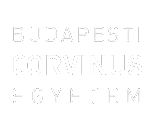Tanishqua, Mary Mathews (2021) The sex talk: A linguistic comparison of Indian and Hungarian sex education = Szexuális felvilágosítás: Az indiai és magyar szexuális oktatás nyelvtani összehasonlítása. BA/BSc szakdolgozat, BCE Kommunikáció és Szociológia Intézet, Kommunikáció- és Médiatudomány Tanszék. Szabadon elérhető változat / Unrestricted version: http://publikaciok.lib.uni-corvinus.hu/publikus/szd/Tanishqua_Mary_Mathews.pdf
|
PDF
- Requires a PDF viewer such as GSview, Xpdf or Adobe Acrobat Reader
929kB |
Szabadon elérhető változat: http://publikaciok.lib.uni-corvinus.hu/publikus/szd/Tanishqua_Mary_Mathews.pdf
Absztrakt (kivonat)
The aim of this research paper is to compare linguistics in the field of sexual education at home in two cultures: the Indian and Hungarian cultures. This topic was chosen to bring awareness to how important it is to discuss sex education at home and how communication plays an important role in this topic. In this research paper, the set of hypotheses are set up that are to be tested: H1: Sex is considered as a taboo topic in Hungarian and Indian cultures and therefore parents do not participate in conversations regarding these topics. H2: The Hungarian culture is more progressive than the Indian culture in terms of having the “sex talk” n their household and/or school. H3: Parents use different lexicons such as euphemisms while conversing with their children in terms of taboo topics such as sex. This thesis covers important fields such as language, cultural linguistics, interpersonal communication and euphemisms used in taboo topics such as sex. Works of Widdowson (1996) and Sharifian (2016, 2017) are discussed in detail about language and cultural linguistics. Moreover, to understand how language can influence the cognition process, Lucy (1996) has described the three levels that can influence the thought process. To understand linguistic relativity and what is encompassed in the strong and weak version of the Sapir-Whorf hypothesis is described through the works of Pederson (2007). Furthermore, to understand what taboo is and how the word came into use and what is considered taboo in the society is summed up by authors Crespo-Fernández (2018) and Allan (2019). To understand what words are considered taboo, we must first understand the concept of euphemisms, dysphemism and orthophemisms (a term coined by Allan and Burridge, 2006) which is explained through the selected work of Allan & Burridge (2006). Through this book, we see what words fall into these categories and how and when each of these lexicons are used. To understand how and when these lexicons are used, it is important to understand the importance of interpersonal communication that is explained through Trenholm, S., & Jensen, A. (2008) and Burleson, B. R. (2010) and is the base for understanding the different communicative relationships formed at home. We can learn this through Family Communication Climate & Interpersonal Communication Climate that is described by authors Barbato, Graham, & Perse, (2003). We then focus on the two cultures to be analyzed in this study; the Indian and Hungarian cultures and discuss how these two cultures handed sex education. For the Indian culture, it is explained through the works of Segal (1991) and Ismail, Shajahan, Rao & Wylie (2015). For the Hungarian cultures, sex education implemented in the country is clearly explained through the important works of Varsa (2018, 2020). Quantitative and qualitative research methods were employed in the empirical part of this thesis where an online survey was sent out to 30 selected participants from the two cultures where 15 of the participants were Indian adolescents who spoke English as their first language for having parents who migrated into the Middle East. The rest 15 participants were Hungarian adolescents who were Hungarian natives that spoke English as their second language. The survey was conducted to see how the adolescents from the respective culture responded to topics and queries about sex education. The findings of the qualitative study showed that indeed the Indian culture is more reserved when it comes to educating adolescents about sex and still consider this topic to be sensitive. The Hungarian culture is fairly more progressive when talking about sexual themes and were more open to answering queries about sex if their child approached them with one. Hungary implements sex education in schools and in homes by instilling Christian values, seeing sex as a key part of marriage and employed the concept of families while educating them on topics about sex. Further studies can be conducted on different countries to shed light on sex education employed in those countries so that other reserved countries may take inspiration from it. Another main conclusion formed from this study was that all 30 participants agreed that sex education should be employed in schools and at home, showing that even if the culture may be reserved or not, adolescents wish to implement sex education for the future.
| Tétel típus: | BA/BSc szakdolgozat |
|---|---|
| Témakör: | Kultúra, közművelődés, sport Szociológia |
| Azonosító kód: | 14796 |
| Képzés/szak: | Communication and Media Science |
| Elhelyezés dátuma: | 12 Szept 2022 11:17 |
| Utolsó változtatás: | 12 Szept 2022 11:17 |
Csak a repozitórium munkatársainak: tétel módosító lap

